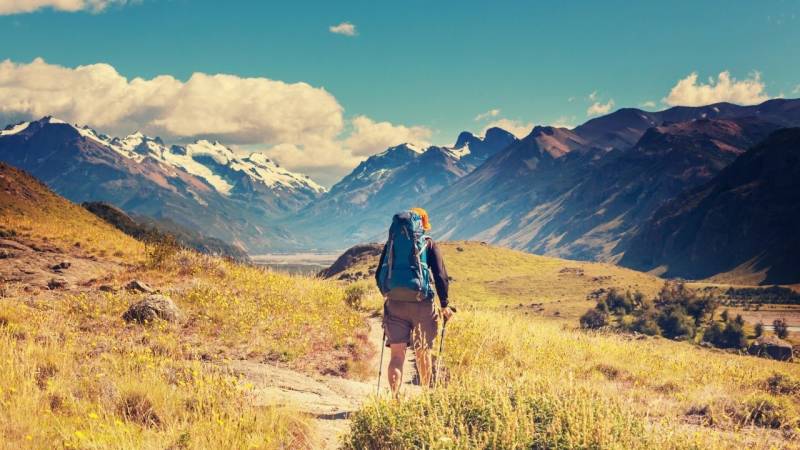
Hiking for Beginners: 13 Essential Tips that let you hike safely
👉 The key facts from this guide
- Choose an easy route that matches your fitness level
- Familiarize yourself with the trail and check the weather
- Pack the 10 essential items and wear the proper shoes and socks
- Dress in layers and pay attention to adequate nutrition and hydration
- Keep your pack light and follow the "Leave No Trace" principles
- Enjoy hiking at your pace and don't be afraid to get lost
If you have many friends who enjoy traveling or camping, you have probably been invited to go hiking once or twice.
While hiking, you will see beautiful sights first-hand and experience nature like no other.
In addition: Hiking is an excellent low-impact workout.
Studies indicate that it offers several physical and mental benefits.
From reducing anxiety to preventing osteoporosis, hiking is an outdoor activity that offers benefits beyond scenery and fun.
Above all, you can disconnect from devices like your phone or laptop and meet with friends in a wonderful way.
If you are planning your first hiking tour, here are my 13 most important tips for beginners:
1. Choose an easy path for your fitness level
The biggest mistake beginners make is overdoing it. They choose a hike that is either too long or has too much elevation gain.
Everything depends on the choice of the path, which should be suitable for your level. As a beginner, you should select a path that matches your fitness level.
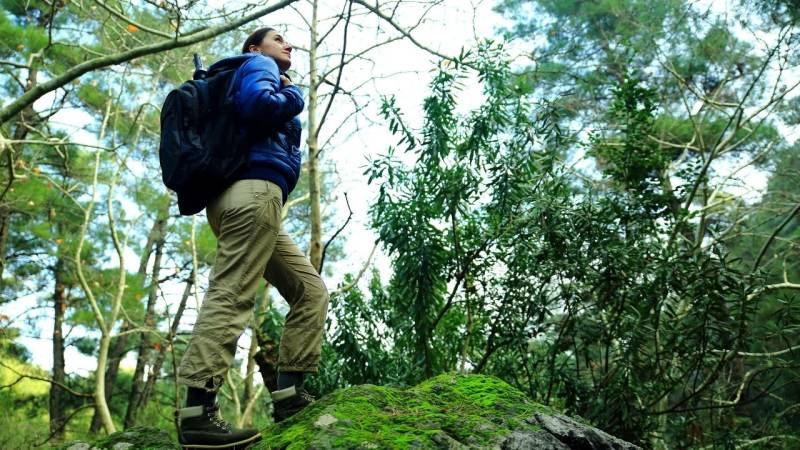
Choose a hike that is slightly shorter than the distance you would normally cover on a flat or paved surface.
To estimate the time required for hiking the trail, calculate with a speed of approximately 3 to 4 kilometers per hour.
Next, you will check the differences in altitude and add one hour to your estimated hiking time per 300m of altitude difference.
After you have been on the road once or twice, you will get a feel for which distances and differences in altitude work well for you.
Once you've got the hang of it, you can choose more challenging routes.
You should also contribute your part to prepare yourself mentally and physically for the tour.
Do exercises on a nearby track, and go as far as you can each time, and rest when you get tired.
My recommendation: If you are just starting out, choose a hike between 4 and 5 kilometers with minimal elevation changes. If you want to do a longer hike, create a training plan. Hike an additional one or two kilometers each week and build up your target distance. Don't forget to consider the elevation changes on your hike. A flat 5-kilometer route is different from 5 kilometers uphill.
2. Familiarize yourself with the route
After you have selected a route, get a map of the area and check reports and data. There are some excellent online resources.
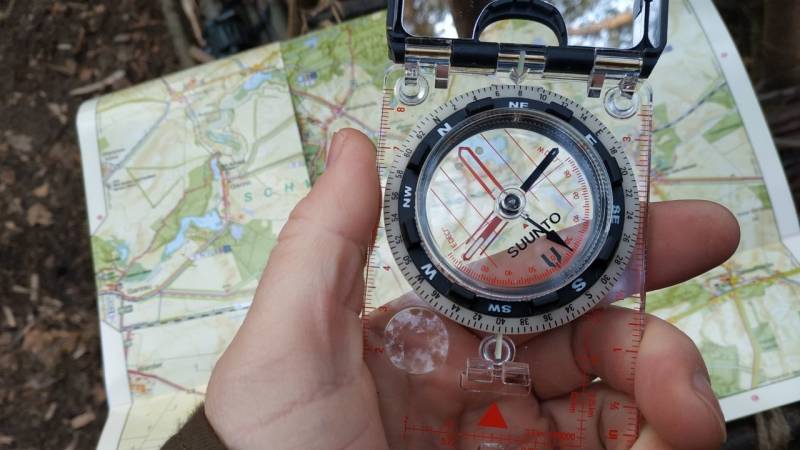
Find out if the path is a loop or if you have to take public transportation back or park a second car somewhere.
Pay attention to intersecting paths where you might turn the wrong way. I also like to find a nice spot for lunch, like a lake or a summit with a view.
3. Check the weather
Check the weather before your hike and a few hours beforehand. This will provide you with valuable information on how to dress and what to pack.
If bad weather is forecasted, you have the opportunity to change your plans instead of being surprised on the way.
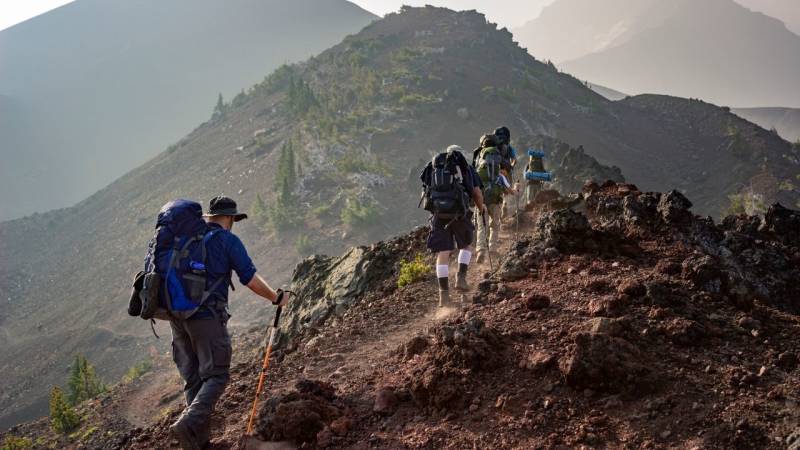
4. Tell someone where you will be
It is important that someone who is not participating in the hike knows the route and when to be concerned and call for help.
Note that I didn't say "if you expect to be finished". Delays are quite normal and almost always occur.
The "worry time" can be several hours later than your planned destination. Slow hiking, breathtaking views, or maybe a blistered ankle can delay arrival.
Another option is to carry an emergency device like a SPOT Tracker (buy here). With such a tracker, you can call for help via satellite.
But remember: Devices like SPOT Tracker are not an excuse to shirk your personal safety responsibilities - they are a backup.
5. Pack the 10 most important things
The 10 essential items you should pack to stay safe outdoors, including a possible night.
But it's not just objects, there are systems that consist of objects.
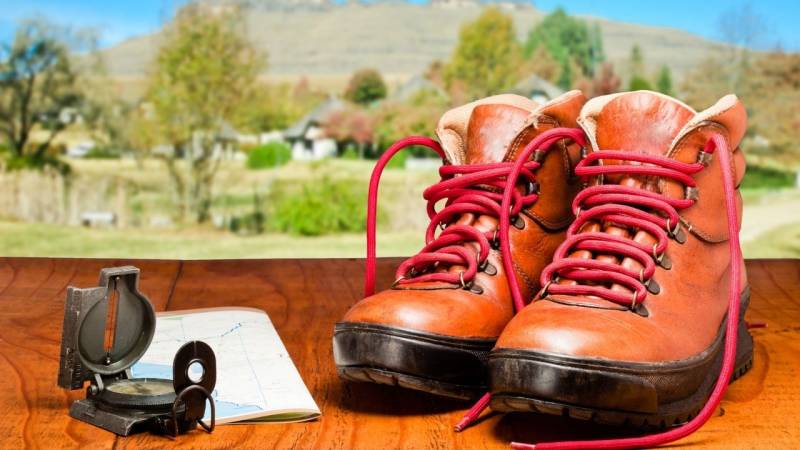
Depending on the length and remoteness of your hike, you can expand or minimize any system.
For a short summer hike near residential areas, a compact emergency blanket should be sufficient.
A secluded winter hike, however, would require something more extensive.
Here are the 10 essential systems:
- Navigation (Map & Compass)
- Sun protection (Sunglasses & Sunscreen)
- Insulation (Extra clothing)
- Lighting (Headlamp/Flashlight)
- First aid kits
- Fire (Waterproof matches/Lighter/Firesteel/Candle)
- Repair kit and tools
- Nutrition (Supplementary food)
- Hydration (Extra water)
- Emergency shelter (Tent/Rescue blanket/Trash bag)
However, I would rather not leave the systems as they are. Take a look at the following guides if you want to delve into more detail:
- How to use a compass with a map?
- First aid kit: assembling and applying
- How to start a fire? [10 steps to success]
- My essential wilderness equipment
And if you're starting out as a beginner, I have my equipment recommendation for you:
- Compass: With the Suunto Compass MC-2/G/6400, I have been navigating through the terrain safely and efficiently for a long time.
- Headlamp: The Winzwon LED Headlamp has never let me down and shines far into the night.
- Fire: The Light My Fire Firesteel Scout is perfect for all adventures to ignite a fire (read my complete review here).
- Tools: The Morakniv Companion is a sturdy and rust-free outdoor knife. I also carry a small Swiss Army Knife by Victorinox as a backup (Find my top list + buying guide here).
- Water bottle: Ever since I tested Nalgene, I don't want anything else. Extremely durable with a reliable screw cap. I have the Nalgene Everyday Water Bottle and the Nalgene Wide Mouth 1 L Water Bottle.
Also read: The 30+ best items for a hike - what you should pack
6. Get the right shoes and socks
Since hiking is an outdoor activity, I recommend preparing for your time outdoors in terms of clothing and equipment.
The most important thing is your footwear that you will use.
A good, high-quality pair of sneakers is sufficient (depending on the path), but it is recommended to invest in a good pair of hiking shoes/boots that support the ankle and preferably are waterproof.
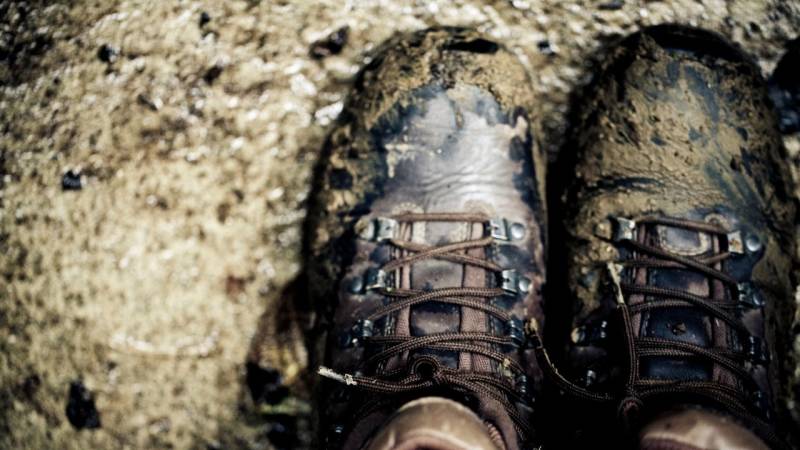
But that doesn't mean you have to get yourself heavy leather boots. There are many lightweight shoes that, compared to the old hiking boots I started with, require little breaking in.
But always check your shoes beforehand to avoid blisters. Just in case, you should also bring some blister plasters.
Don't skimp on socks and never cotton socks. Wool or synthetic socks are the right choice.
7. Dress for success
Once your feet are taken care of, the right clothing is the key to an enjoyable hike.
Skip cotton, as it gets wet and stays that way, making you feel damp (which causes chafing). Instead, opt for synthetic materials.
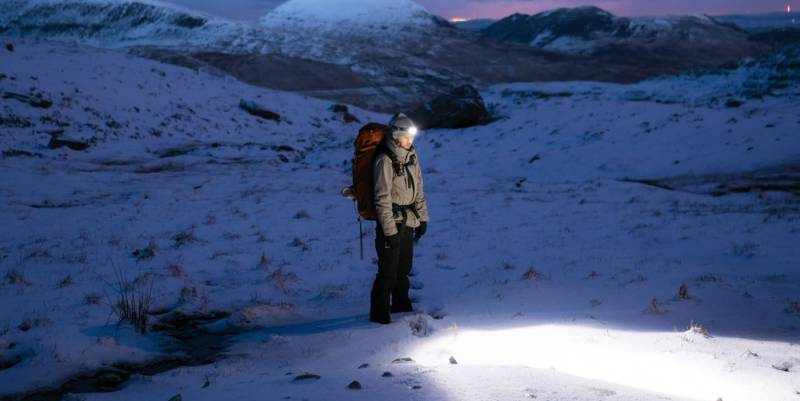
To easily adapt to the temperature and weather, you wear your clothes in layers that you can add or remove as needed.
At the end, pack an additional warm layer that goes beyond what you think you require. Preferably something that also blocks the wind.
Also read
Hiking in any weather: How does you dress when hiking in nature? – You want to find the suitable hiking clothing for your next hiking tour, regardless of rain or sunshine? Read here what you need to pay attention to.
8. Eat well and drink enough
You will need a lot of energy on your journey.
Make sure to have a good, solid meal before hiking. An optimal choice is a protein-rich diet to ensure your muscles are well nourished.
Don't forget to pack snacks - preferably light snacks that contain a lot of natural sugar and healthy fats.
Dried fruits and nuts are highly recommended.
Don't forget your water bottle.
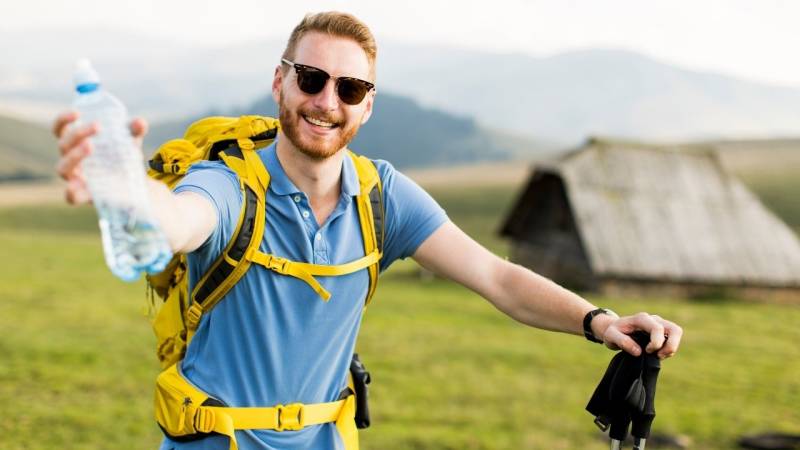
Hiking is both a mental and physical activity - so you should train both aspects before your trip.
9. Keep it light
Almost every beginner makes the mistake: They pack too much and people end up hiking through the forest with a 25 kg backpack. Ouch, that's going to be tough.
But I also started like that, and maybe you have to make the experience yourself.
I gradually optimized my systems and things I didn't need flew out of the backpack (of course, the first aid kit doesn't count!).
This means specifically that you should choose the lightest option for each item. For example, you would take a travel-sized sunscreen instead of the large family bottle that you found on sale.
10. Leave no traces
Leave No Trace is an incredibly important collection of principles for anyone who wants to enjoy nature.
The principles aim to reduce human impact on the outdoors. Leave No Trace helps to keep our public lands beautiful and accessible for future generations.
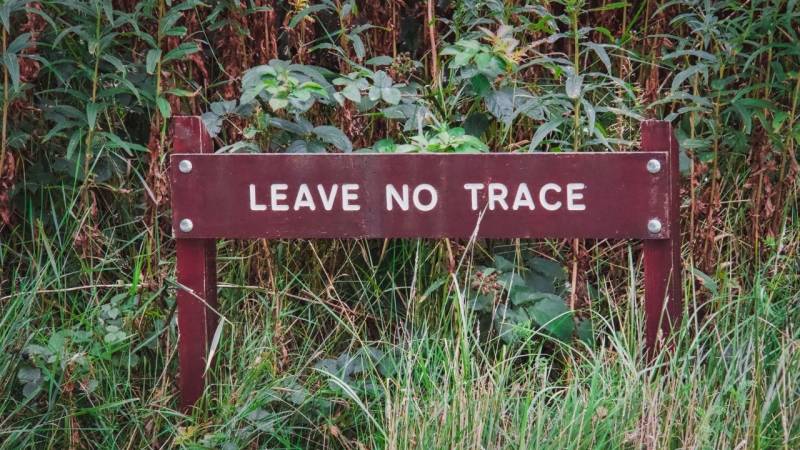
Take the time to read and follow the 7 principles of Leave No Trace. It is up to every outdoor enthusiast to take care of our natural spaces.
- Plan ahead and prepare. Familiarize yourself with the area and regulations before going hiking. Respect the park rules. Avoid hiking in bad weather that may require search and rescue operations. Visit trails in small groups and avoid hiking during crowded times. The easiest way to follow this principle is to research your hike beforehand and start your hikes early in the morning.
- Travel and camp on designated trails and sites. Always stay on established trails. Do not wander off the trail to get a cool photo or a scenic view. When camping, choose a site that has been camped on before.
- Dispose of waste properly. Always pack out all trash, including food waste such as orange peels and seeds. These foods are usually not native to your region and can harm animals. When nature calls, dig a 20 cm wide hole and bury it afterward. It is also important to pack out all toilet paper and feminine hygiene products. (Here is my detailed guide to outdoor hygiene)
- Leave places as you found them. Take nothing home with you. This includes feathers, bones, rocks, and wildflowers. Leave nature in nature.
- Minimize the impact of a campfire. If the past summers have taught us anything, it is that fires can spread quickly and cause massive devastation. So avoid making a fire during the dry season. And if you do, only ignite a fire in an official fire pit. A safer alternative is to use a gas stove instead. Buy firewood locally to prevent pests and diseases from entering the environment.
- Respect wildlife. Keep a distance from animals while hiking. Store your food properly, especially if you are in bear country. It is also essential to keep your dog under control and on a leash when hiking on trails with wildlife crossings.
- Be considerate of other visitors. Hiking should be a relaxing hobby. Be friendly to other hikers and greet them occasionally. Do not play music and keep your dog away from others.
Read also
The 7 Leave No Trace Principles and their Application: Your Guide to Environmentally Conscious Outdoor Behavior – Discover how the Leave-no-Trace principle can revolutionize your outdoor experience. Protect what you love and read more about this environmental protection.
11. Start at the right time
First, I strongly recommend starting your hike as early as possible.
The later you start, the more crowds there will be.
On the other hand, if you are unsure about hiking alone and want to have other people on the trail, go at a popular time.
However, it can be more difficult to park - but you're not alone.
12. Hiking is not a race
When hiking, being steady is better than being fast.
I often see beginners who start a hike very quickly and later run out of breath.
Save your energy, especially on a long hike. You never know what situation you might need to use your energy for later.
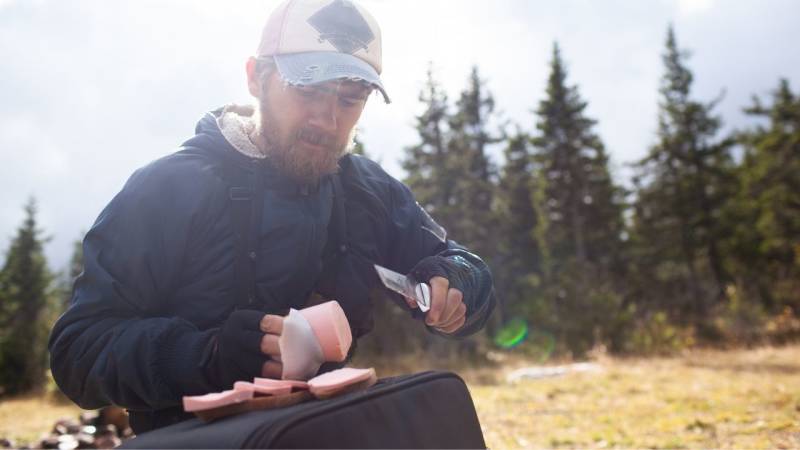
If you get lost, for example, or have to take a long way, you need energy to correct this. It's a matter of safety.
Even when hiking in a group, stay with the group. If you decide to split up into smaller groups, plan locations on the map where the group will regroup.
There is nothing worse than not knowing where a member of your group is. That is a surefire way to not reach your destination or turn a day hike into a night hike.
If you are hiking with children, you should adjust to the speed and needs of the children. You can find more tips on hiking with children at outdoor-tests.com.
Hiking at a comfortable pace is also a great way to take everything in. Enjoy nature, breathe in the fresh air, and keep an eye out for wildlife.
Reading tip: What food to take for hiking? - 5 delicious recipes for backpacking
13. Don't be afraid to get lost
If you think you're lost, you must immediately stop walking.
Check your plan and see if anything looks familiar. If not, go back until your surroundings match the descriptions in your plan/travel guide.
Getting lost while hiking is something that happens to the best of us and is not a big deal. Backtracking solves the problem in 99% of cases.
If you have been walking for a while and still don't recognize anything, stop walking. Check if your phone has reception and try calling 112.
If you have a GPS distress beacon, it is now time to press the button. You can also try shouting "Help" at regular intervals.
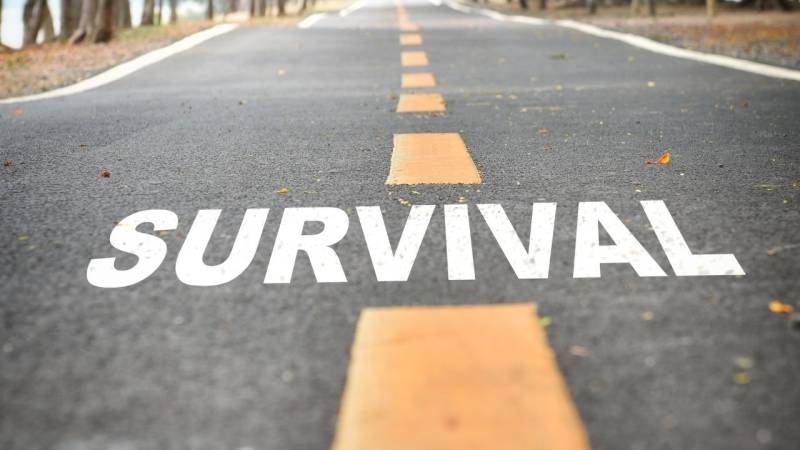
If you find yourself in an open area, hang bright clothing for airplanes, light a signal fire, and spell SOS with sticks and stones on the ground.
If you're cold, you can simply pile dead leaves on yourself to keep warm. Of course, it's better if you build a proper shelter.
Also read: The plan on how to survive three days in the wilderness
Frequently Asked Questions from Beginner Hikers
How many kilometers should a beginner hike?
Between 4 and 5 kilometers is a good starting point. However, there is no set rule for the beginning hiking distance. Nevertheless, it is easier to work your way up gradually. Your route should be based on your physical condition.
Is it okay to hike alone?
Walking alone is absolutely safe, but I do not recommend it for beginner hikers. Why not try to find friends in the area or attend meetups to learn the basics of hiking before setting off on your own.
If you want to hike alone, bring plenty of water and the ten most important things with you and let others know where you are going.
What should I do before going on a hike?
Before you go on a hike, you should research the trail. Take note of things like hiking distance, elevation gain, difficulty level, and starting point.
Inform yourself about the park rules and make sure your bag is packed with the ten essential items. Don't forget to check the trail conditions and the weather, and leave your itinerary with a friend.
What should I not do while hiking?
Turn off the music and respect your environment and nature. Following the 7 "Leave-No-Trace Principles" will help you keep the environment clean and protected. It is also significant that you never go hiking without a plan. Make sure you have researched the trail properly, know your limits, and have an emergency plan.
How do I go to the toilet while hiking?
Find a quiet, uncrowded spot along the trail. If you need to do a number two, dig a 20 cm hole beforehand and bury your waste after you're done. You don't need to dig a hole just to pee. Never bury toilet paper or tissues that contain plastic or are not 100% paper.
You should never bury wet toilet paper or wipes. Read my guide here on going to the toilet in the woods.
What do beginner hikers need to bring?
Beginner hikers should bring at least:
- The 10 Essentials (important safety and survival equipment)
- A sturdy backpack
- At least 0.5 liters of water per hiking hour
- Durable hiking shoes with good traction
- Breathable tops and lightweight pants. Avoid cotton and jeans.
How to prevent blisters while hiking?
The easiest way to avoid blisters while hiking is to wear merino wool socks and well-fitting, broken-in shoes. Merino wool helps prevent blister-causing moisture and chafing. Break in your hiking shoes or boots before hitting the trail by wearing them on walks near your home.
How many meters of altitude can a beginner hike?
In general, as a beginner, you should not attempt more than 200 to 300 meters of elevation gain per hour.
How to become good at hiking?
The easiest way to become good at hiking is through practice. Start with easy hikes at low altitudes and gradually build up your endurance. Set hiking goals and create a plan to work towards those goals. You won't become an experienced hiker overnight, but as your skills improve, you'll conquer a whole range of new adventures.
Will animals attack me while hiking?
Probably not. If you are traveling in countries with bears, bring bear spray with you. It also works on humans and mountain lions. In general, animals stay away from humans. The chance of winning the lottery is higher.
Final thoughts on hiking for beginners
Hiking is one of the best ways to experience nature and can be extremely therapeutic and rewarding.
With a little practice and the following tips, you'll be ready to conquer even the most challenging trails.
With these tips, I hope that you will soon set off.
Where will you go? Leave a comment to share your ideas - I would love to hear them.


Author of the guide
Martin Gebhardt
Hey, I'm Martin. On my blog, you will learn the basics and numerous details about living in the wild. I think survival, bushcraft and the good life in nature are the keys to happiness. Find me here on Instagram or on YouTube. You can find more about my mission on the About Me page.
Was this guide helpful?
11 people found this guide helpful.
5.00 out of 5 points (11 Ratings)
Comments (0)
This post may contain affiliate links. So if you click on the links and make a purchase, I will receive a small commission at no additional cost to you. Click here, to learn more about it.


